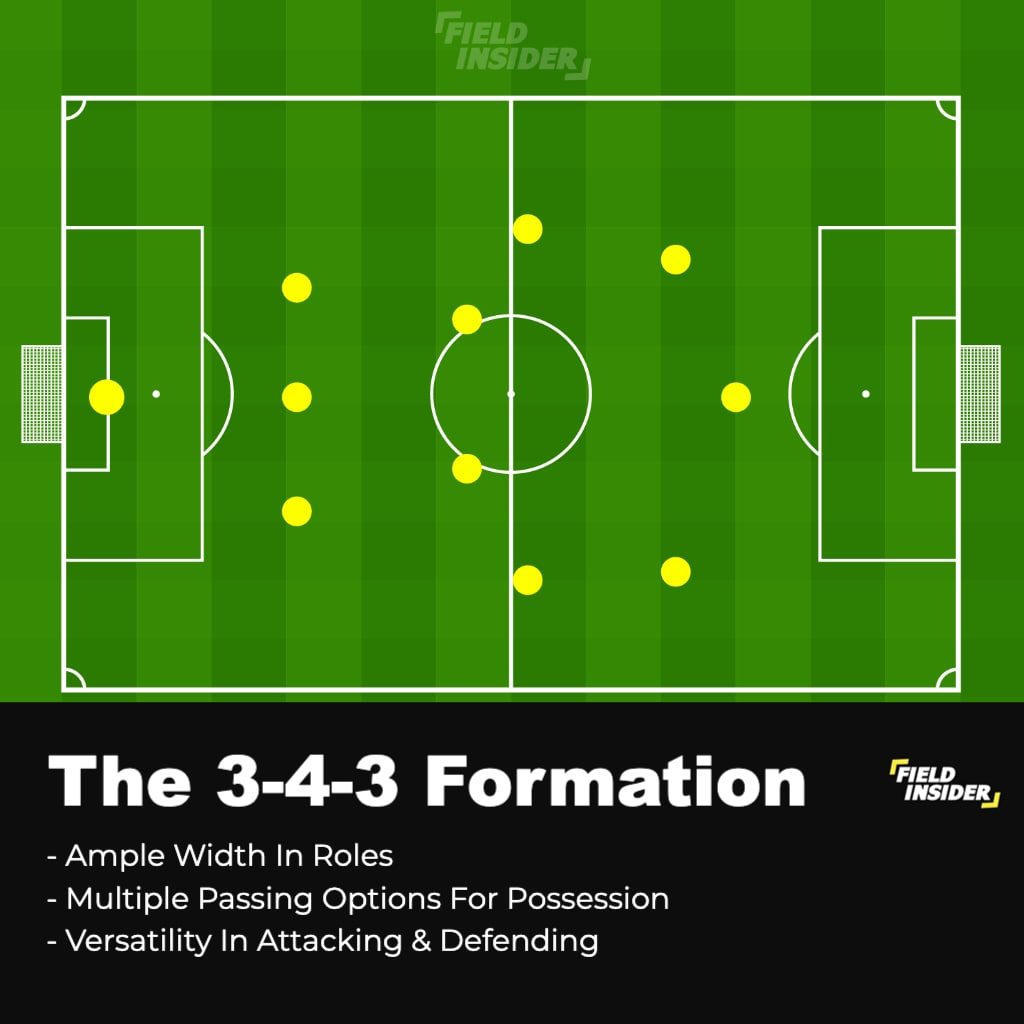
The Art of Onslaught: Best Formations for Attacking Football
Football, at its heart, is a battle for space and superiority. While defensive solidity often wins championships, it’s the audacious, relentless pursuit of goals that truly captivates the global audience. Attacking football, a philosophy etched into the DNA of legendary teams and revered managers, is about more than just scoring; it’s about dominating possession, suffocating opponents with high presses, creating numerical advantages in dangerous areas, and unleashing a relentless wave of creative play. And at the core of this beautiful chaos lies the tactical framework: the formation.
However, labeling one formation as the "best" for attacking football is an oversimplification. The effectiveness of any system hinges on the players available, the manager’s philosophy, the opponent’s strengths, and the fluidity with which players interpret their roles. A formation is merely a starting point, a blueprint upon which the dynamic movements, intelligent runs, and intricate passing patterns are built. Yet, certain formations inherently lend themselves more readily to an attacking mindset, providing the structural advantages necessary to unlock defenses and dictate the tempo of the game.
In this comprehensive exploration, we will delve into the most potent formations for attacking football, dissecting their strengths, outlining their demands, and understanding the principles that transform a static shape into a formidable attacking force.
What Defines Attacking Football?
Before dissecting formations, it’s crucial to understand the principles that underpin truly attacking play:
- High Possession & Control: Not just possession for its own sake, but purposeful possession aimed at creating openings and tiring opponents.
- Verticality & Penetration: The willingness to play forward quickly, breaking lines and getting the ball into dangerous areas.
- Width & Depth: Stretching the opponent horizontally and vertically to create space.
- Fluidity & Interchangeability: Players are not confined to static positions; they swap, drift, and make intelligent runs.
- High Press & Counter-Press: Winning the ball back quickly and high up the pitch to launch immediate attacks.
- Numerical Superiority: Overloading specific areas (midfield, flanks, penalty box) to gain an advantage.
- Creative Freedom: Allowing key players the license to innovate and take risks in the final third.
With these principles in mind, let’s examine the formations that excel in facilitating them.
1. The Prolific 4-3-3: Modern Dominance
Perhaps the quintessential attacking formation of the modern era, the 4-3-3 has been the bedrock of some of the most dominant teams in history, from Rinus Michels’ Total Football to Pep Guardiola’s Barcelona and Jürgen Klopp’s Liverpool.
Structure: Four defenders (two center-backs, two full-backs), three central midfielders (one holding midfielder, two attacking/box-to-box midfielders), and three forwards (one central striker, two wide forwards).
Attacking Strengths:
- Width & Depth: The wide forwards stretch the defense, while the full-backs provide overlapping runs, creating dangerous triangles on the flanks.
- Midfield Control: The three-man midfield offers numerical superiority in the center, facilitating quick ball circulation and suffocating opponents. The holding midfielder (No. 6) provides a pivot for build-up and protection.
- Dynamic Front Three: The wide forwards often cut inside (inverted wingers), creating goal-scoring opportunities themselves or opening space for overlapping full-backs. The central striker can be a traditional target man, a false nine, or a poacher.
- High Pressing: The compact nature of the midfield and the aggression of the front three make it ideal for high pressing, forcing turnovers in dangerous areas.
Demands:
- Attacking Full-backs: Must possess exceptional stamina, crossing ability, and tactical intelligence to contribute to both defense and attack.
- Technically Gifted Midfielders: The two attacking midfielders (No. 8s) need to be excellent passers, capable of making late runs into the box, and able to defend.
- Versatile Forwards: Wide forwards need to be comfortable cutting inside, going wide, and tracking back.
Examples: FC Barcelona (under Pep Guardiola), Liverpool FC (under Jürgen Klopp), Manchester City (under Pep Guardiola).
2. The Versatile 4-2-3-1: Balancing Creativity and Stability
The 4-2-3-1 is arguably the most widely used formation in contemporary football, offering a fantastic balance between defensive solidity and attacking prowess. It’s a natural evolution of the 4-3-3, providing an extra layer of midfield protection.
Structure: Four defenders, two central defensive midfielders (double pivot), one attacking midfielder (No. 10), two wide attacking players, and a lone striker.
Attacking Strengths:
- The "Number 10" Factor: The attacking midfielder is the creative fulcrum, operating in the space between the opponent’s midfield and defense, capable of intricate passes, through balls, and long-range shots.
- Midfield Stability: The double pivot offers robust protection for the defense, allowing the full-backs and attacking midfielder more freedom to push forward.
- Fluid Wide Players: The wide attacking players can drift inside, act as traditional wingers, or support the full-backs, providing various attacking avenues.
- Counter-Attacking Threat: The structure lends itself well to quick transitions, with the No. 10 and wide players rapidly supporting the lone striker.
Demands:
- Elite No. 10: This player must be highly creative, intelligent, and capable of handling defensive responsibilities when needed.
- Energetic Wide Players: They must be able to contribute goals and assists while also tracking back defensively.
- Workhorse Striker: The lone striker often needs to hold up play, link with the No. 10, and press defenders relentlessly.
Examples: Real Madrid (under Carlo Ancelotti), Chelsea (under Jose Mourinho’s first spell), Manchester United (under Sir Alex Ferguson’s later years).
3. The Reimagined 3-4-3 / 3-5-2: Wing-Backs Unleashed
Once considered purely defensive, three-at-the-back systems have experienced a renaissance, particularly the 3-4-3 and 3-5-2, driven by managers seeking to overload central areas and maximize wing-back contributions.
Structure (3-4-3): Three center-backs, two central midfielders, two wing-backs, and three forwards.
Structure (3-5-2): Three center-backs, three central midfielders, two wing-backs, and two strikers.
Attacking Strengths:
- Wing-Back Overload: The wing-backs become crucial attacking outlets, providing width, delivering crosses, and making deep runs, often creating 2-on-1 situations on the flanks.
- Central Numerical Superiority: In the 3-5-2, having two strikers allows for constant pressure on the opposition defense and varied attacking movements. In the 3-4-3, the three forwards can create overloads in the final third.
- Ball-Playing Defenders: The three center-backs allow for more comfortable build-up from the back, as they have multiple passing options.
- Compact Midfield: The central midfield trio (3-5-2) or duo (3-4-3) ensures control and quick ball recovery.
Demands:
- Exceptional Wing-Backs: They must possess incredible stamina, defensive diligence, and attacking prowess. They are the engine of the system.
- Tactically Astute Center-Backs: Need to be comfortable defending wide areas and capable of stepping into midfield.
- Hard-Working Midfielders: Must cover vast distances to support both defense and attack.
Examples: Chelsea (under Antonio Conte), Atalanta (under Gian Piero Gasperini), Inter Milan (under Antonio Conte/Simone Inzaghi).
4. The Revitalized 4-4-2: A Classic Reinvented
The 4-4-2, once seen as a rigid and somewhat outdated formation, has found new life in attacking football through tactical adjustments that prioritize fluidity, compactness, and rapid transitions. While traditionally known for its defensive solidity, modern interpretations make it surprisingly potent.
Structure: Four defenders, four midfielders (two central, two wide), and two strikers.
Attacking Strengths (Modern Interpretation):
- Strike Partnership: Two strikers provide constant pressure, make varied runs, and offer multiple passing options, often leading to excellent link-up play.
- Compactness & Pressing: The two lines of four make it difficult for opponents to play through, facilitating effective pressing traps.
- Overlapping Full-backs: The wide midfielders often tuck in, allowing the full-backs to provide the primary width in attack, creating numerical advantages on the flanks.
- Quick Transitions: The proximity of the two strikers to the midfield allows for rapid counter-attacks once possession is won.
Demands:
- Dynamic Strikers: One may be a target man, the other a poacher, or both could be agile and intelligent movers.
- Workhorse Wide Midfielders: They need to track back defensively to support the full-backs and also contribute to attack by cutting inside or linking up.
- Intelligent Central Midfielders: Must be able to distribute the ball quickly and break up play.
Examples: Leicester City (under Claudio Ranieri – primarily counter-attacking but effective 4-4-2), Atlético Madrid (under Diego Simeone – more defensively focused but high press can lead to quick attacks). While Simeone’s Atletico is often defensive, their 4-4-2 press is an excellent example of how the shape can be used aggressively to win the ball high.
Beyond the Formation: The Guiding Principles
As reiterated earlier, a formation is a mere skeleton. The flesh and blood of attacking football come from the principles applied:
- Player Profiles: The "false nine," "inverted winger," "roaming playmaker," and "attacking full-back" are not just buzzwords; they represent roles that maximize the attacking output within a given formation.
- Fluidity and Rotations: Players must be encouraged to vacate their nominal positions, making intelligent runs to create space for teammates or to exploit gaps in the opposition’s defense. Positional interchange is key.
- High and Counter-Pressing: Winning the ball back in advanced areas instantly puts the team in an attacking position, often catching the opponent disorganized.
- Quick Transitions: The ability to switch from defense to attack in a blink of an eye, exploiting the opponent’s vulnerability.
- Overloads: Creating numerical superiority in key areas of the pitch, be it the midfield, the flanks, or around the opposition’s penalty box.
- Set Pieces: A significant source of goals, an attacking team should prioritize creative and well-rehearsed set-piece routines.
Adapting and Evolving
No single formation is invincible. The truly great attacking teams are those that can adapt. They might start in a 4-3-3 but shift to a 3-4-3 in-game to exploit a weakness, or bring on a different type of player to change the dynamic. The modern game demands tactical flexibility and the ability to react to the opponent’s strategy.
Furthermore, the evolution of football means that formations are constantly being reinterpreted. The emergence of new player types and coaching philosophies ensures that the art of attacking football remains a dynamic and ever-changing spectacle.
Conclusion
Attacking football is a beautiful symphony of movement, intelligence, and relentless ambition. While the 4-3-3, 4-2-3-1, three-at-the-back systems, and the revitalized 4-4-2 offer excellent structural foundations, their true power lies in the principles applied: fluidity, high pressing, quick transitions, and the courage to commit players forward.
Ultimately, the "best" formation is the one that best utilizes the strengths of the available players, aligns with the manager’s vision, and allows the team to consistently create and convert goal-scoring opportunities. It’s not about rigid lines on a whiteboard, but about the seamless interplay of eleven individuals, all united in their relentless pursuit of the opponent’s net, making the beautiful game truly breathtaking.



